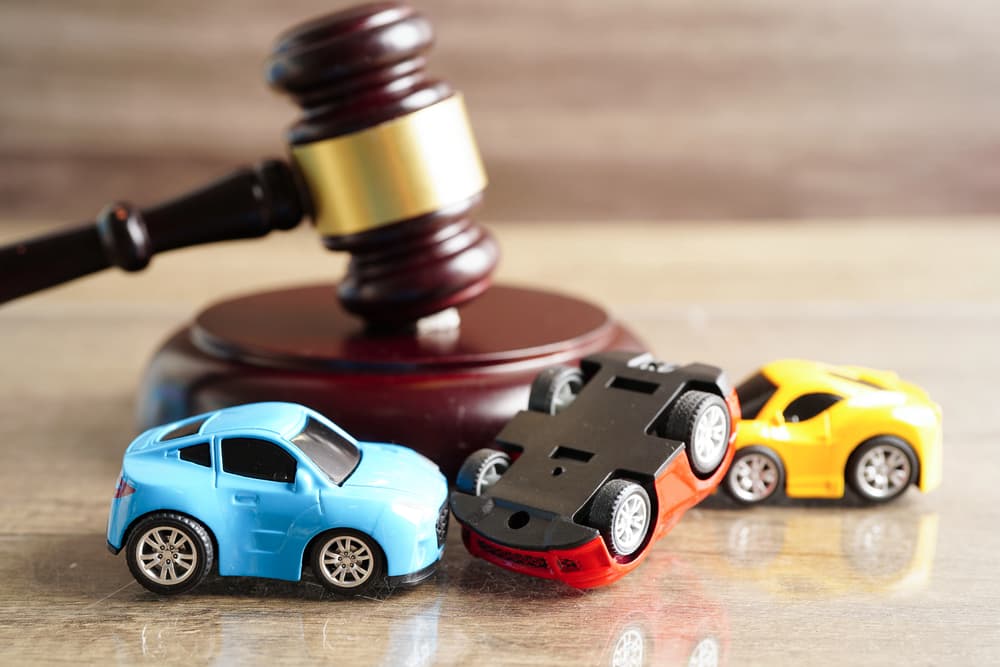What are the most common defences used in car accident lawsuits?
In Fresno car accident lawsuits, common defences include comparative negligence, where the plaintiff shares responsibility for the crash. Other defences include claiming the accident was unavoidable, disputing the severity of injuries, or arguing that the statute of limitations has expired. A car accident lawyer may also challenge liability by questioning the credibility of evidence or eyewitness testimony.
Car crashes frequently result in disputes where individuals try to seek fairness or financial recompense for damages incurred. Exploring arguments used in legal cases can offer useful perspectives for those dealing with the legal system concerning accidents on the roadways. This article examines tactics used by defendants to challenge allegations in car accident lawsuits and reveals the complexities involved in these defences.
Understanding Comparative Negligence
In car accident cases, a common strategy is to claim comparative negligence. Defendants contend that plaintiffs bear some responsibility for the event. By proving shared fault, defendants seek to lessen their accountability, potentially reducing the amount of compensation they must pay. Laws vary by location, with some following negligence rules permitting plaintiffs to seek damages even if they are mostly at fault. Others opt for a modified stance that prevents recovery when plaintiffs surpass a percentage of the blame.

Assuming Risk
Another common defence strategy is the concept of assuming risk in cases where defendants argue that plaintiffs were fully aware of the dangers involved in their actions and willingly accepted them beforehand, which could weaken or dismiss their claims altogether This defence tends to be brought up in situations where plaintiffs were involved in high-risk activities, like racing or driving in challenging weather conditions.
In the Event of An Emergency, Special Rules May Apply
When individuals are caught in unavoidable circumstances while causing an accident, they can invoke the emergency doctrine as a defence strategy to prove their actions were reasonable within the situation they faced at that moment. To successfully employ this defence tactic in court, defendants need to demonstrate that they encountered an event and respond appropriately and with judgment. Factors like time limitations and available choices, along with the perceived level of threat, are considered by courts when assessing the credibility of this defence approach.
Technical Malfunction
Defendants also consider the possibility of problems as a factor in accidents rather than solely blaming driver mistakes for mishaps on the roadways. They argue that issues like brake failures or steering malfunctions could have contributed to the incidents. To support this defence effectively, it is essential to show evidence of vehicle upkeep and prompt repairs. If defendants can demonstrate that the mechanical failure was inevitable and not due to negligence, their liability may be lessened in some cases.
Contributory Negligence
In some places of the law system, contributory negligence is used as a defence strategy where defendants argue that the plaintiff’s own negligence played a role in causing the accident and, thus, they should not receive any compensation for damages incurred as a result of the incident. This strict regulation implies that even a small degree of fault on the part of the plaintiff can prevent them from receiving any compensation for their losses. Although this concept is not widely accepted at times, it still remains relevant in certain regions. Hence, plaintiffs need to prove their innocence entirely to be successful in such cases.
The Absence of a Link
Defendants often use a lack of causation defence strategy to challenge the connection between their actions and the accident in question. They claim that their behaviour did not directly lead to the incident in dispute, countering the plaintiff’s assertion of causation. Proving a lack of causation involves presenting explanations or evidence that disrupts the link between the defendant’s actions and the accident.
The Time Limit for Taking Action
Defendants can use the statute of limitations as a defence tactic in proceedings. This rule sets a time limit for initiating lawsuits; missing this deadline could lead to case dismissal. Defendants aim to challenge the plaintiff’s claim by emphasizing the expired statute of limitations. Plaintiffs must be aware of time limits. Act swiftly to counter this defence strategy effectively.
In Summary
Handling matters related to car accident lawsuits can be quite intricate, as defendants often use tactics to dispute claims made against them. What makes it challenging is the defence strategies employed, such as negligence and adherence to time limitations, for filing lawsuits. Every approach poses hurdles and factors that need consideration. For those caught up in these battles, knowing about these defence mechanisms is vital in constructing a case.

![[AD] We’re a cricket-mad family, so we’re buzzing that @thehundred is back this August! 🏏🔥
To get ready, M tried out the official FREE Activity Pack — and it’s brilliant! 🙌
Packed with fun games, creative challenges and sporty tasks, it’s perfect for getting kids hyped whether you’re at home or on the go.
👉Download yours now (link in bio)
@londonspirit @ovalinvincibles #EveryMomentCounts #TheHundred
#EnglandCricket #CricketFamily #TheHundredCricket #LondonBloggers #Cricket #CricketIsLife #kidsfun](https://suburban-mum.com/wp-content/uploads/2022/11/505472555_18531279601016840_7092520074819907569_n-180x320.jpg)



![[AD - Press visit]
We enjoyed the glorious sunshine this weekend with a trip to Brighton. We went on the @brightoni360official which is right by the sea front.
The i360 pod take a slow journey up, allowing you to take in views across Brighton and the South Downs 450ft above ground. There’s a bar inside with drinks and snacks available to purchase and the experience lasts 25 minutes.
Afterwards, we headed to the open air roller rink for a roller skating session!
The roller rink is:
⭐ Suitable for over 5s
⭐ £6.50 if you have your own skates or £9.50 if you need to hire them
⭐ 45 minutes per session
Full details to visit the i360 + skating
📍 Brighton i360, Lower Kings Road, Brighton BN1 2LN
🚗 Parking nearby (we parked in the Regency Square Car park)
🎟️ Prices start from £25.40 for an adult and £16.90 for a child
🕐 Opening hours are currently Sun-Fri 10.30am-18.30pm and until 19.30pm on Saturdays
☕️ Bar inside the i360, cafe and gift shop
Book tickets here:
https://tickets.brightoni360.co.uk/tickets/?_ga=2.195305772.1869001490.1689671753-1757164059.1689671753/#events?eventid=157](https://suburban-mum.com/wp-content/uploads/2015/04/417980235_313576471048632_3682382982231216432_n.jpg)

![[AD] ***Summer of fun at Barracudas Activity Camps!****
There is plenty for kids to do at @barracudas_activity_day_camps
From Tennis, Archery, Swimming, Motor Sports and more you can be sure that there will be something for kids aged 4.5-14. ⚽🏈🥅🎾🏓🏎️🏹🏊♂️🏉
You can book on a day by day basis - so it can fit in with any other days out/activities you have planned and there are early drop off and late pickup options available. Barracudas are also Ofsted registered so you can use your Childcare Vouchers too.
⭐⭐⭐Get £20 off a week or £4 off a day using my discount code: MARIA20⭐⭐⭐
#BarracudasActivityDayCamp #BarracudasActivityCamp #BarracudaAmbassadors #SummerHolidays #SchoolHolidays #Summer2023 #SummerCamp #DayCare #Camp #KidsCamp #surreymummy #surreymums #SummerOfFun #ActivityCamps #HolidayCamps #Childcare #SchoolHolidays #schoolholidaycamps](https://suburban-mum.com/wp-content/uploads/2024/07/353583570_625625966167953_545896259645102575_n.jpg)



![[AD] We have some super exciting news...we have been chosen to be Laser Quest Ambassadors, and the boys are over the moon!
We are really lucky that our local Laser Quest (@laserquestkingston) is just around the corner from us. It means we can pop in of a weekend or anytime during the school holidays, and with summer just around the corner, I know Laser Quest will be one of our go-to places for some family fun.
As well as games of Laser Quest, there are also VR experiences and arcade amusements too. To find out a bit more about how Laser Quest works, you can read my blog post: https://www.suburban-mum.com/laser-quest-kingston/ (clickable link in bio)
Don't forget to keep an eye out for our Laser Quest posts - I'm going to be giving away two family passes to use at Laserquest Kingston!
If you can't wait and want to head down to Laser Quest to try it out, use the code SUMMER30 for 30% off your booking. The code is valid from now until the end of August 2023 and can be used on Laser Quest games and birthday party bookings.
#LaserquestAmbassador #Laserquest #LaserquestKingston #ActivitiesForKids #FamilyFun #DaysOutWithKids #Lasertag #LaserquestVR #Kingston #ThingsToDoInKingston #SurreyFamilyDaysOut #ThingsToDoWithKids #RainyDayFun #SurreyMummy #SurreyLife #LifeWithKids #LifeWithBoys #familyfunday](https://suburban-mum.com/wp-content/uploads/2015/04/353230107_797358078406942_2405522556733455165_n.jpg)

![[AD] The sun has finally made an appearance and the boys have been making the most of it by spending it
in the garden.
They’re go-to is always football and they’ve been trying to improve their aim and accuracy with the new Messi Foldable Footlball goal from the #MessiTrainingSystem range.
I love the fact the goal is foldable, making it easy to store away when not in use. It is also lightweight so you can effortlessly pack it up and take it to the park or to a friend’s house.
The Messi Foldable Football Goal retails at £36 and can be purchased from @argos
You can read my full review here: https://www.suburban-mum.com/messi-foldable-football-goal/
#TrainLikeMessi #FoldableFootballGoal #FootballSkills #OutdoorFun #LionelMessi #LeoMessi #FootballAtHome #OutdoorKids #JustGetOutside #OutdoorsAndFree #ScreenFreeKids #WhateverTheWeatherKids @flair_gp](https://suburban-mum.com/wp-content/uploads/2015/04/341194882_615024710178056_41977149395989448_n.jpg)

![[AD] We are absolutely thrilled to announce that we are Barracuda Ambassadors again this year.
With Easter just around the corner, the boys were sent the @barracudas_activity_day_camps new camp kit in preparation for the school holidays.
There’s a wide range of activities for kids aged 4.5 - 14 including Tennis, Archery, Basketball, Arts & Crafts and more.
If you like the sound of Barracudas, find out more over on their website. You can also save £20 a week or £4 a day, using my discount code: MARIA20](https://suburban-mum.com/wp-content/uploads/2024/07/336812306_765234558514317_685553691647241974_n.jpg)


![[AD - Gifted]
Last weekend we were invited to try out @tsarettaspice’s new Bottomless Brunch menu and I can tell you it was thumbs up all round!
There’s a good choice tapas on offer from Punjabi fish fingers, Indo Chinese Chicken to Spiced Lamb Scotch Eggs and Manchurian Cauliflower (which was amazing!)
If you’re local to Twickenham and fancy giving them a try here’s are the details.
Tsaretta Spice Bottomless Brunch
⭐️£37.50 per head for bottomless Prosecco or cocktail of the day
⭐️£55 per head for bottomless Champagne
⭐️ Food included: 4 tapas selections and dessert or 2 tapas selections, a pav or naanwich and dessert
⭐️ Non-alcohol brunch is also available
Tsaretta Spice
55 Church Street
Twickenham
TW1 3NR
You can also read our full review over on the blog (link in bio)](https://suburban-mum.com/wp-content/uploads/2024/07/334565436_5960402314015030_663031098700829518_n.jpg)
![[AD] What does family look like for you?
I am fortunate to be surrounded by strong, powerful women in the form of my mum, sister and mother-in-law (along with many others). With Mother’s Day just around the corner, @BootsUK want to celebrate all the different mums and mother figures we are lucky enough to have in our lives. They have a huge range of Mother’s Day gifts to choose from so we can show them how much they mean to us. (swipe to take a look at some of my choices)
If you want to express love and appreciation for the mother figure(s) in your life, head to Boots.com to find the ideal gift. They have a whole host of gifts, so you can be sure to find something to suit all tastes. Celebrate the #LoveForAllMums this Mother’s Day with Boots.
](https://suburban-mum.com/wp-content/uploads/2015/04/334276459_136658625736352_6403224988403337253_n.jpg)



